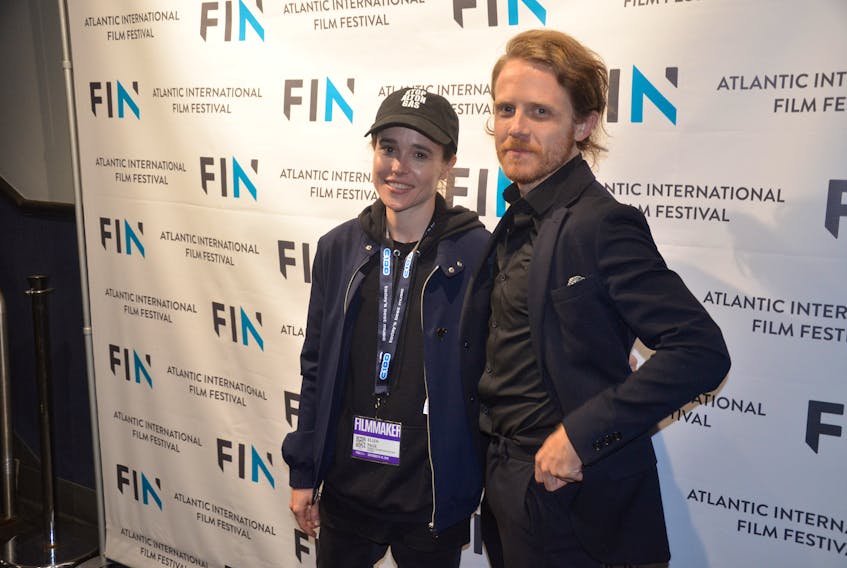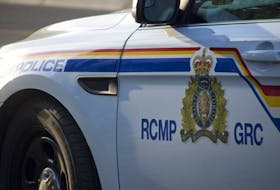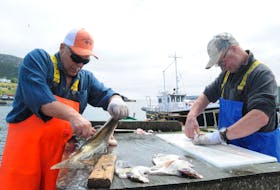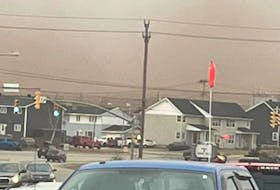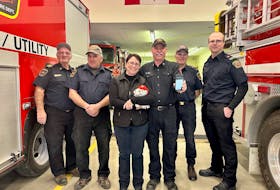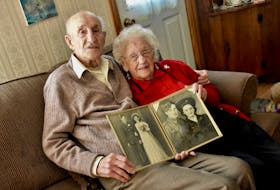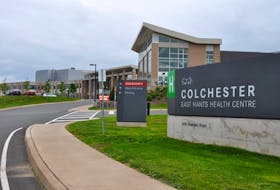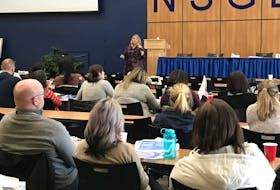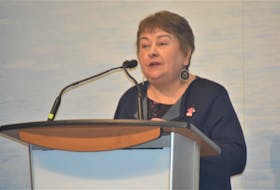Diminutive Halifax-born actor and producer Ellen Page raised her voice to fight against environmental racism Saturday night.
“When you see that communities have been destroyed and people have been killed because of this situation, you immediately feel compelled and moved to act,” Page said before her documentary There’s Something in the Water screened at the FIN Atlantic International Film Festival.
“I felt like, Oh, potentially if I connect with Ingrid Waldron and other local activists, I can learn more and help amplify the voice. It was about seeing this issue and that we could connect in a way and leverage my privilege and platform.”
The 73-minute film, created with the help of Prof. Waldron of Dalhousie who had previously authored a book about environmental racism in Nova Scotia under the same name, talks about black and indigenous communities being perceived as having no value compared with white settlements.
The documentary plots on a map of the province where black and indigenous communities are located and then marks off the areas in which landfills and toxic industries are placed.
Waldron is very familiar with the consistent overlap.
“Environmental racism is the condition, the problem of disproportionate exposure of indigenous communities, black communities, other communities of colour, to environmental burdens, to pollutants and contaminants,” Waldron explains in the film. “It’s also about the slow response by government to address these issues.”
Waldron said postal code determines your health in Canada.
'Sharing these stories is hard'
Page and co-filmmaker Ian Daniel visited three of the inter-connected dots on that map.
“Ian was doing the audio recording. It was him and myself and one other person,” Page said before the film rolled.
“When it is just three people walking into a living room, you have this level of intimacy and connection and we’d spend the day together. It allowed for a lot of truth and vulnerability. We’re beyond grateful that we were accepted and welcomed into people’s homes and communities because sharing these stories is hard, it’s full of grief, it’s full of inter-generational trauma and it’s a lot to get in front of a camera and talk about this stuff.”
Louise Delisle of Shelburne took the filmmakers on a tour of her part of town, the settled black community on the south side that government deemed would be a good area to locate a dump to collect and bury the garbage from the town and surrounding areas. When the refuse piled too high, it was set afire, Delisle commented, remembering going to school with clothing smelling from the overpowering soot from the dump fire that pervaded her neighbourhood. Delisle said the dump no doubt contaminated brooks and wells.

“It’s killing us,” Delisle told Page and Daniel as they drove through the community and she pointed to home after home where someone had died of cancer or was suffering from the decease.
“We didn’t put that (dump) there. Families didn’t ask for that but now we’re reaping the fallout from that by losing the ones we love. They’re gone. There is so much cancer in our community.”
The dump existed for decades before finally being permanently closed in 2016. The town had been reluctant to set aside $6,000 in funding, the estimated cost to construct a community well to provide clean water to the south end of Shelburne, Page narrated.
Pain of Boat Harbour
The next stop was Pictou Landing First Nation, where Page spoke with Michelle Francis-Denny about the Boat Harbour lagoon next to her community that has been collecting pulp and paper mill effluent for more than half a century.
Francis-Denny said her grandfather, Louis Francis, was chief when government suggested using Ausseg, the little harbour that she says has become known by its polluted name, Boat Harbour, as a lagoon to treat the effluent from the mill. The promise was that harbour water would remain unchanged and $60,000 for the residents of Pictou Landing was thrown in as an incentive.
The mill went into production, fish died off and Francis-Denny’s grandfather dealt with overwhelming guilt until his early death, she said.
“What would life be like for my family if Boat Harbour didn’t happen?” an emotional Francis-Denny asks in the documentary, referring to a cycle of guilt, high incidences of cancer and suicides that has plagued her family since the Boat Harbour agreement.
“If this didn’t happen, would we have a chance to live in a way that we could grow old together.”
Finally, an effluent pipe spill and a blockade by the Pictou Landing members in 2014 resulted in provincial legislation to force the shutdown of the Boat Harbour treatment plant by Jan. 31, 2020. Northern Pulp came up with a plan for a new wastewater treatment plant that would dump effluent into the lucrative fishing grounds in Northumberland Strait, near the Pictou Landing community.
“They are proposing a new pipeline and treatment plant that just takes it from our backyard and puts in our front yard,” said Francis-Denny, now a community liaison for the Boat Harbour cleanup project. “We’ve been impacted by this treated effluent for more than five decades. We shouldn’t have to continue to fight. ... Why is the government OK with that?
“We’re never going to be free of it.”

River is 'sacred'
The final leg of Page and company’s documentary was at the Shubenacadie River estuary near Fort Ellis, Colchester County. There, Alton Gas, plans to draw nearly 10,000 cubic metres of water daily from the estuary and push it through a 12-kilometre underground pipeline to a second 80-hectare construction site off Brentwood Road, near Alton. There, the water will be pumped nearly 1,000 metres underground to flush out salt to create two gas-storage caverns and the 1.3-million cubic metres of dissolved-salt brine will be gradually discharged back into the estuary over a two-to-three-year period.
The Mi’kmaq community, primarily from nearby Indian Brook, have fished the Shubenacadie River for many generations and say the salt infiltration will result in a massive fish kill.
“This river is a sacred to us,” Michelle Paul said in the film. “This river is the super-highway of our nation. ... We won’t let this company destroy it.”
Paul said the company, a subsidiary of AltaGas, is not in compliance with federal regulations. Instead of stopping the project, she said the federal government is intent on revamping the regulations to make the project compliant.
“We have the Department of Fisheries, for one, of the opinion that they are not able to step in unless and until something actually goes into the water. We’re saying we’re not going to let that happen because that risk is too great. You can’t un-ring the bell once it’s been rung. Once that brine goes in the river, it will increase the salinity levels, it will kill the fish. And then what?”
In April, three women among a group who call themselves the Grassroots Grandmothers water protectors, were arrested for contempt of an injunction order at the Alton Gas entrance gate.
The documentary, shown in two theatres, wrapped up with an audience question-and-answer session involving Page, Daniel, Waldron and the women who were documented in the film. Questioners were urged to keep the conversation about environmental racism in the forefront in person and on social media.
“I hope that more and more people will become more educated about what’s going on, not only in Nova Scotia but in Canada and all around the world,” Page said of her aspirations for the film. “I hope that people put a lot of pressure on our government because right now they seem to be favouring corporate interests over human beings and our environment and that needs to change.”
RELATED:

